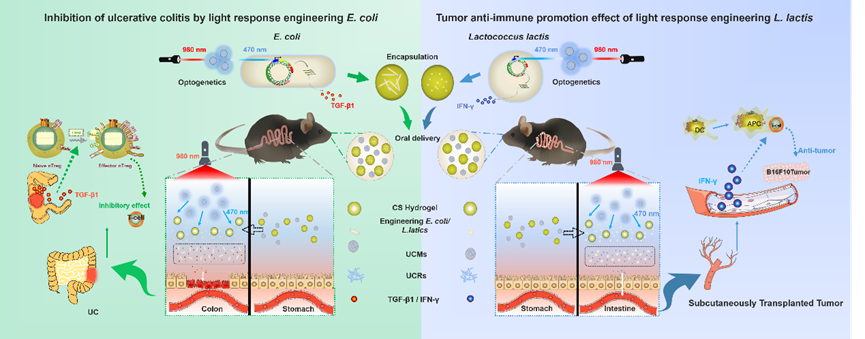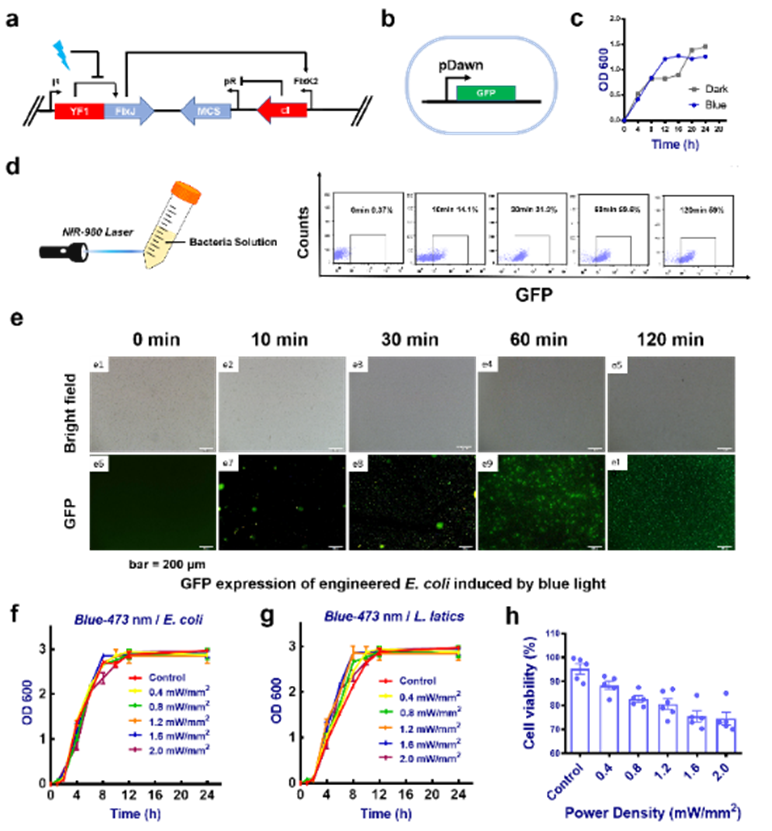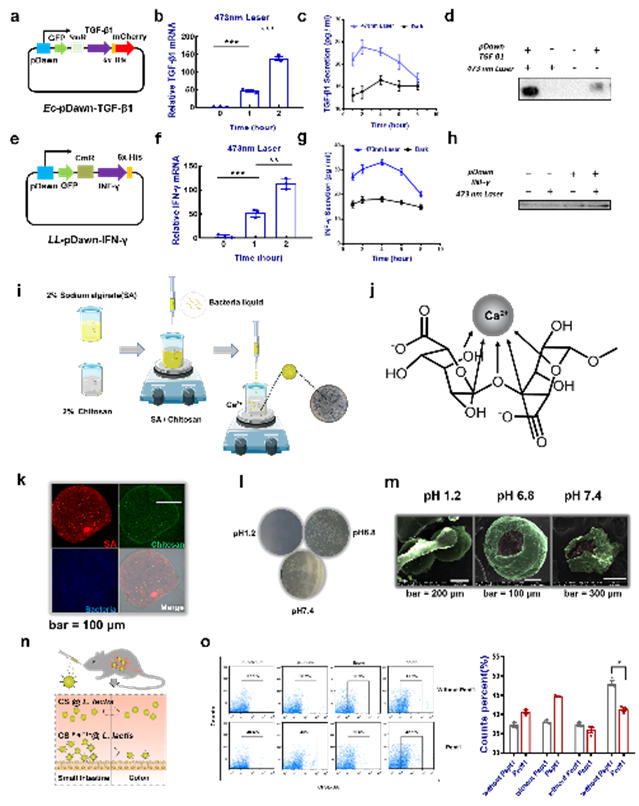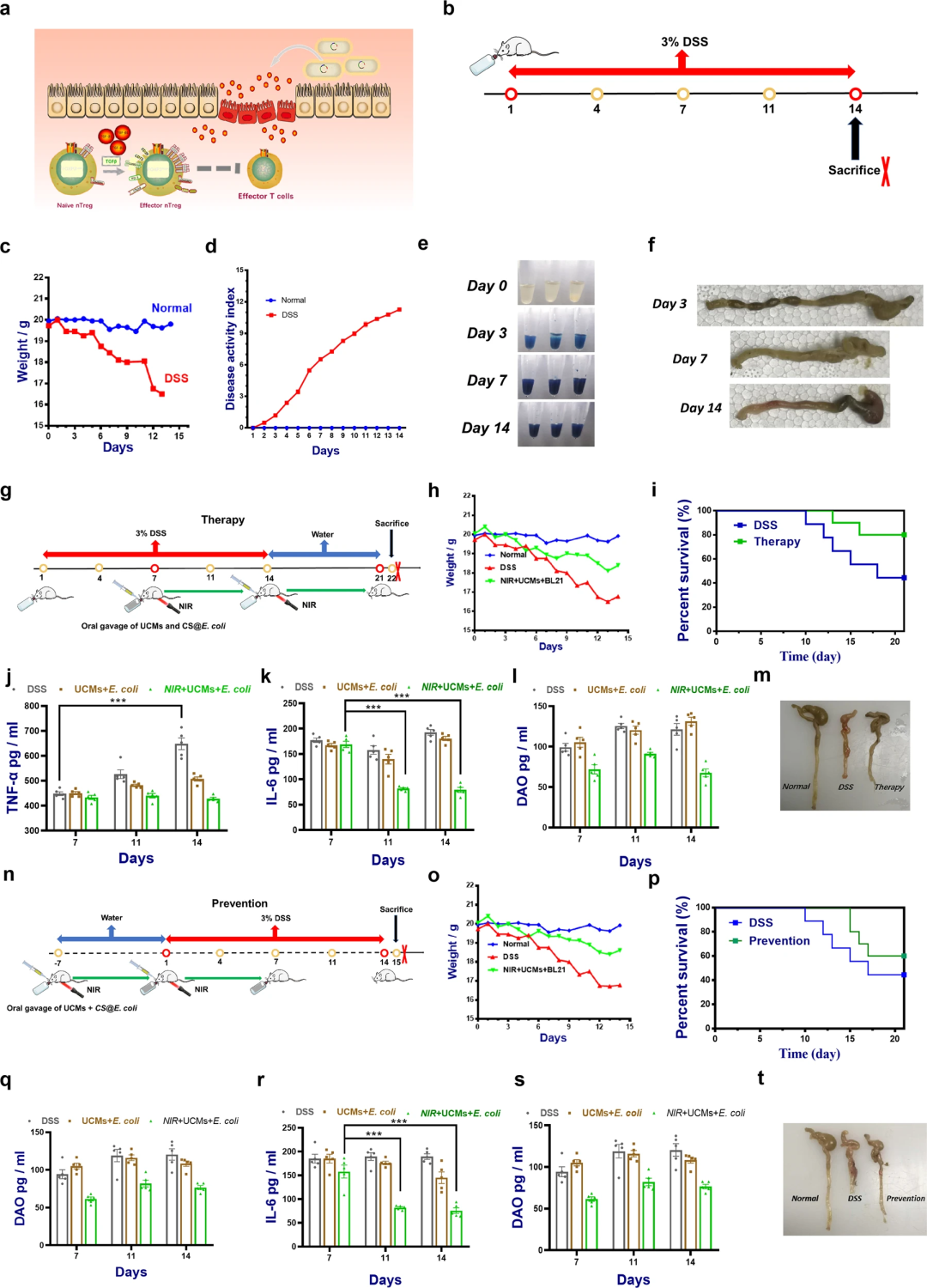QQ Academic Group: 1092348845
Detailed
"bioactive drugs" for enhancing function and treating diseases has become a frontier research hotspot in the field of biomedical science. However, currently, there is a lack of effective methods for in vitro non-invasive precise regulation of in-situ intestinal bacterial metabolism, which to some extent limits its transformation and application process.
Main points of this article:

1) Construction and verification of light response engineering strains: pDawn system regulated by visible light gene is the core element of the plasmid of light sensitive engineering bacteria. Verification by reporter gene shows that this gene promoter can effectively realize the light-controlled expression of the target protein gene, and the corresponding engineered strains also have strong light response sensitivity.

2) transformation on the nanostructured luminescent materials and engineering strains in vivo delivery of application: non-invasive near-infrared transformation on rare earth nanomaterials with light response type engineering strains can be encapsulated in the selected within the hydrogel microspheres after chemical modification, by oral delivery intestinal targeted colonize specific area, rare earth conversion on nanometer materials and the application of near-infrared light is also very good solve the less visible in vivo application penetrating common problems.

3) System function verification of immune-related disease model: in the mouse colitis model and the mouse subcutaneous melanoma model, the immune regulation characteristics of this system have been well verified. From the Angle of prevention and control of the corresponding disease, the course of disease has been delayed and blocked.

This work not only opens up a new way for optogenetics, but also expands a new model for the application of genetically engineered microorganisms in vivo biomedical engineering for the effective treatment of immune disorders. The first author of this paper is Yang Chun, Cui Meihui and Zhang Yingying from the School of Life; corresponding author is Wang Hanjie from the School of Life and Sun Tao from the School of Chemical Engineering/Biosafsafety Center.
References:
Yang C, Cui M, Zhang Y, Pan H, Liu J, Wang S, Ma N, Chang J, Sun T & Wang H. Upconversion optogenetic micro-nanosystem optically controls the secretion of light-responsive bacteria for systemic immunity regulation[J]. Communications Biology.
DOI: 10.1038 / s42003-020-01287-4
- Previous: Nano Energy: High open
- Next: IF 26.8! Immune nano-e


 Academic Frontier
Academic Frontier
